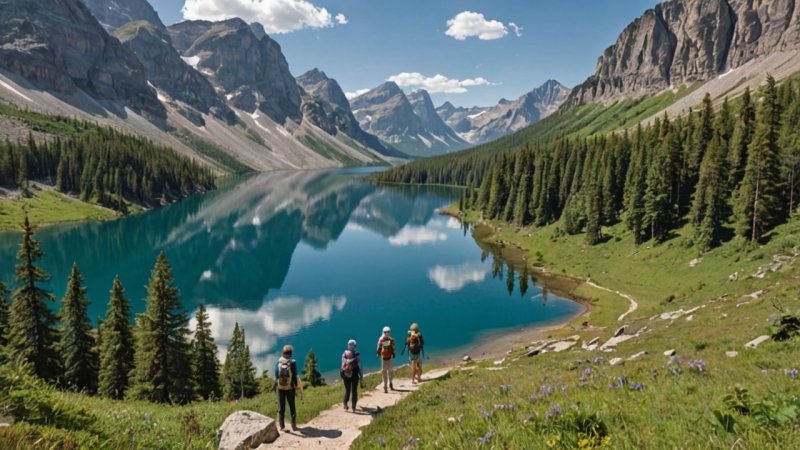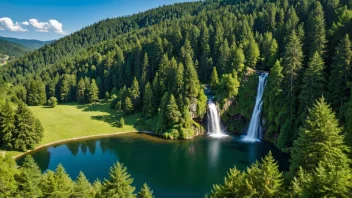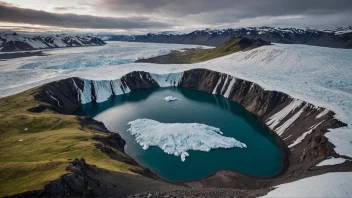As the world increasingly recognizes the importance of sustainability, national parks have become bastions of eco-friendly travel. These majestic natural sanctuaries not only preserve biodiversity but also offer travelers a chance to engage in eco-conscious activities that enhance their connection to nature. From hiking along scenic trails to participating in conservation programs, national parks provide a plethora of opportunities for environmentally-minded adventurers. In this article, we will delve into some of the best eco-friendly activities available in national parks, ensuring that your travel experience is both enjoyable and responsible.
1. Hiking and Nature Walks
One of the most popular and eco-friendly activities in national parks is hiking. Trails often wind through breathtaking landscapes, showcasing the park's unique flora and fauna. Hiking allows travelers to immerse themselves in nature while minimizing their ecological footprint. Many parks offer guided nature walks led by park rangers who share insights about local ecosystems, wildlife, and conservation efforts. Whether you are an experienced hiker or just looking for a leisurely stroll, there’s a trail suited to your level of fitness.
2. Wildlife Watching
National parks are home to diverse wildlife, and observing these animals in their natural habitat is a thrilling experience. Eco-friendly wildlife watching encourages visitors to respect the animals and their environments. When engaging in this activity, it's essential to maintain a safe distance, avoid feeding the animals, and follow park guidelines to minimize human impact. Bring binoculars or a camera with a zoom lens to capture the beauty of wildlife without intruding on their space. Popular parks for wildlife watching include Yellowstone, Yosemite, and the Great Smoky Mountains.
3. Volunteering and Conservation Programs
Many national parks offer opportunities for visitors to participate in conservation efforts. Volunteering is a fantastic way to give back to the environment while learning about the challenges facing these natural spaces. Activities may include trail maintenance, habitat restoration, or wildlife monitoring. Engaging in these programs helps preserve the park's beauty for future generations and fosters a sense of community among like-minded individuals. Check the park's official website for specific volunteer opportunities and schedules.
4. Camping with a Minimal Footprint
Camping is an iconic way to experience national parks, and it can be done sustainably. Choose designated campsites to limit your impact on the environment and follow Leave No Trace principles. This includes packing out all trash, using biodegradable soaps, and keeping campfires contained and manageable. Many parks also offer eco-friendly camping options, such as yurts or cabins built with sustainable materials. Camping allows you to connect more deeply with the natural world, offering a unique vantage point for stargazing and wildlife observation.
5. Kayaking and Canoeing
For those who enjoy water activities, kayaking and canoeing are excellent eco-friendly options available in many national parks. Paddling through pristine lakes and rivers allows you to explore hidden coves and observe wildlife without disturbing their habitats. It’s a low-impact activity that promotes physical fitness while providing stunning views of the surrounding landscape. Parks like Glacier and Acadia offer rental services and guided tours for those new to kayaking, ensuring a safe and enjoyable experience.
6. Cycling
Many national parks feature scenic bike trails, making cycling another eco-conscious way to explore the great outdoors. Biking not only provides an exhilarating experience but also reduces carbon emissions compared to driving. Visitors can rent bicycles or bring their own to navigate the parks at their own pace. Cycling allows for more extensive exploration of the park, providing access to areas that may be less frequented by car traffic. Always adhere to park rules and stay on designated bike paths to protect wildlife and natural habitats.
7. Educational Programs and Workshops
Engaging in educational programs and workshops is an enriching way to deepen your understanding of the environment while participating in eco-friendly activities. Many national parks offer ranger-led programs that cover topics such as geology, botany, and wildlife conservation. These programs often include hands-on activities, allowing participants to learn about ecological principles and the importance of preserving our natural resources. Check the park's calendar for upcoming events that align with your interests.
8. Photography with a Purpose
Photography in national parks can be a form of eco-friendly art that highlights the beauty of nature and raises awareness about conservation issues. When photographing landscapes and wildlife, it’s crucial to respect the environment by staying on trails, not disturbing animals, and avoiding litter. Parks often hold photography contests that encourage visitors to capture the essence of the park while promoting environmental stewardship. Sharing your images on social media can also inspire others to appreciate and protect these natural treasures.
Conclusion
Traveling to national parks offers a unique opportunity to engage in eco-friendly activities that foster a deeper appreciation for the environment. From hiking and wildlife watching to volunteering and photography, there are countless ways to explore these natural wonders responsibly. By choosing sustainable practices and participating in conservation efforts, travelers can contribute to the preservation of these beautiful landscapes for generations to come. As you plan your next adventure, consider incorporating these eco-friendly activities into your itinerary and experience the beauty of nature while supporting its protection.






